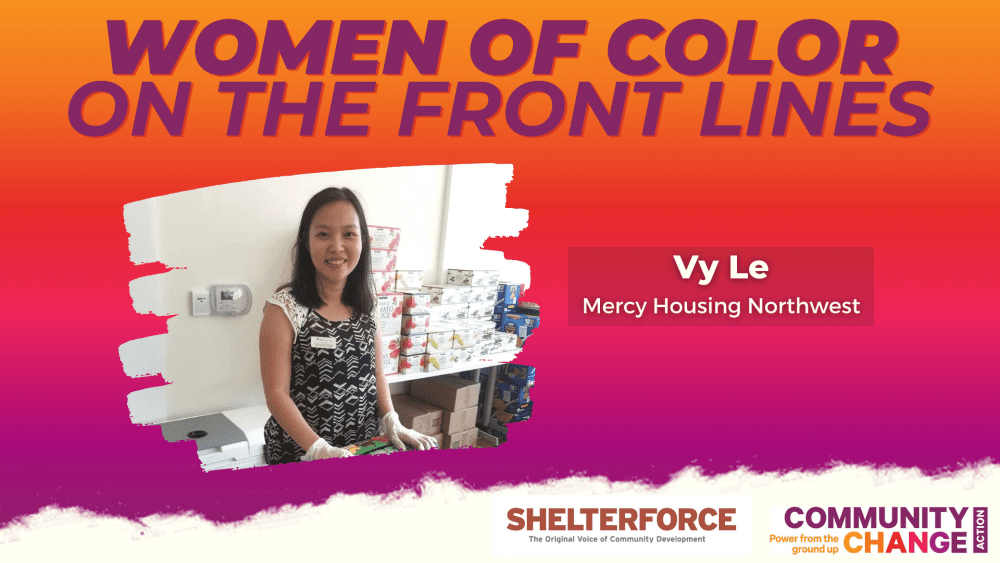I be
For these reasons, I support the broader struggle to more proactively promote fair housing and to develop more inclusive, diverse, vibrant communities.
However, also for broader reasons of equity and opportunity, I am wary of HUD’s current proposal to Affirmatively Further Fair Housing (AFFH). I am afraid that the unintended consequence of this policy will be to shift public resources away from low-income communities of color.
In order to prevent this, the policy needs better account for community-based, community-driven projects and activities.
A growing body of data shows that residents of high concentration poor and minority neighborhoods generally face worse life outcomes (economic, health, educational, etc.) than similarly situated poor and minority folks who otherwise do not live in high concentration poor and minority neighborhoods. That is, even controlling for income and race/ethnicity, there is some sort of negative correlation with living in a high concentration poor and minority neighborhood.
Some people, looking at this data, argue that this means that we should redouble our efforts to improve low-income neighborhoods of color—to organize people, provide services and develop projects to make sure that resources and infrastructure are fairly allocated and that we do better to build upon the already existing assets in these important communities.
Some people, looking at this data, argue that we should redouble our efforts to improve social and physical mobility, to reduce barriers to opportunity for people to live where they want, to have better access to the education, jobs and services that already exist in other neighborhoods.
These two sets of aspirations are not mutually exclusive. They are both worthy goals and we should not be promoting one at the expense of the other. But my fear is that the current HUD AFFH proposal will privilege the latter and discourage the former.
Requiring that jurisdictions take fair housing into consideration when making federal funding allocation decisions is good. As is requiring that these decisions be data-driven. However, given the path of bureaucratic least resistance, I have little faith that all jurisdictions will do this in a deep and substantive way. It will be all too easy for jurisdictions to look at HUD’s AFFH data tools and, in the name of no longer concentrating poverty, effectively red-line low-income communities of color from future HUD investments like HOME, CDBG, CoC, etc. (in HUD’s online AFFH GIS, the racial/ethnic minority poverty tracts are literally lined in red).
There is a big difference between, on one hand, an affordable housing project that is dumped into a poor/minority neighborhood because of a bias (conscious or not) towards segregating poor/minority people and, on the other hand, an affordable housing project that is developed in a poor/minority neighborhood and has a local genesis and is part of a broader set of plans and activities to improve a neighborhood and the lives of the people living there.
I don’t trust all jurisdictions to make this distinction well at the level of a fair housing analysis or at the level of consolidated planning without the express direction to do so. That is, HUD’s AFFH proposal needs some mechanism to explicitly allow (and instruct not to discourage) community-initiated projects that may have an ancillary short term effect of concentrating poverty within an already poor/minority neighborhood. Not to do so would drastically curtail the possibility for the best, most empowering, most impactful forms of real, grassroots community development and would shift resources from the places that need them the most.
Secretary Donovan has publically stated that the HUD’s AFFH proposal is not intended to disable neighborhood revitalization efforts. As currently written, the AFFH needs to make this intent more explicit.
Housing discrimination is alive and well in America and it is a moral imperative that we do a better job of affirmatively assuring fair housing and equal opportunity for all. HUD’s AFFH proposal is a big step in the right direction.
But we also need to be sure that we recognize the positive aspects of many neighborhoods that happen to be poor and minority and that we fully resource and build upon indigenous efforts to improve, preserve or revitalize such neighborhoods. As we reduce barriers to people living where they want, we should not be adding barriers for people to improve where they already live.






Comments